The Canadian Standard on Embodied Carbon in Construction is a crucial legislation that provides a comprehensive framework for addressing carbon emissions in construction projects. It mandates stakeholders to measure, disclose, and mitigate embodied carbon throughout the project lifecycle. Compliance with this standard demonstrates a commitment to environmental stewardship and supports Canada’s sustainability goals. By promoting the use of low-carbon materials and efficient building techniques, it fosters a transition towards a more sustainable built environment.

The Standard on Embodied Carbon in Construction includes the following requirements:
- Disclose the carbon footprint of structural materials
- Reduce the carbon footprint of structural materials
- Ensure that structural materials are specified by a professional engineer registered or licensed in the province or territory where the project will be implemented; and
- Review the completed Embodied Carbon Disclosure Template (refer to the Embodied Carbon Project Disclosure Template) before project completion to ensure compliance with disclosure and reduction of carbon footprint of this standard;
Further these should include the following requirements in the procurement of construction services:
- Ensure that the Embodied Carbon Disclosure Template (refer to the Embodied Carbon Project Disclosure Template) is secured by the organization before project completion, and that it lists the required information for each type of material identified
- Disclose the embodied carbon footprint of structural materials measured in global warming potential (GWP) with Environmental Product Declarations (EPDs) that:
- Reference the material supplier’s name or professional association as a contributor;
- Comply with international standards within the period of validity; and
- Are produced using the highest available resolution life cycle inventory (LCI) data
- Where EPDs are not readily available, provide a life cycle assessment (LCA) report that complies with international standards (International Organization for Standardization (ISO) 14044, ISO 14025, and ISO 21930 or equivalent) and that is verified by an LCA reviewer as such a report is considered an acceptable equivalent form of disclosure.
- Finally, submit to the Treasury Board of Canada Secretariat, at the time of the annual call letter of the Greening Government Strategy, a consolidated report that details the embodied carbon footprint for all construction projects completed in the previous fiscal year that meet or exceed the thresholds. This information may be used for other reporting obligations under the Federal Sustainable Development Strategy.
Application
This standard applies to any new construction or renovation of real property in Canada at or above the thresholds at the time of solicitation of design services.
Greenhouse Gas Reduction Requirement
For design services solicited on or after December 31, 2022, the embodied greenhouse gas (GHG) emissions of procured ready-mix concrete shall be disclosed on a project basis and be substantiated with EPDs Project GHG emissions from ready-mix concrete are the sum of GHG emissions from all mixes used, calculated using the global warming potentials (GWPs) and volumes of each mix placed. The total project GHG emissions from ready-mix concrete shall be at least 10% less than those calculated using the GWPs of the baseline mix in the Regional Industry Average Environmental Product Declaration (EPD) for the strength class of each mix and the volume of mix placed (see equations 1 and 2). The Embodied Carbon Disclosure Template must be used to demonstrate this outcome.
Equation 1:

Equation 2:

Where: Carbon dioxide equivalent (CO2e) baseline represents the emissions calculated by the volumes of all the mixes used in the project multiplied by their regional average GWP as represented by:

CO2e project represents the emissions from the concrete used in the project calculated by the volumes of all the mixes used in the project multiplied by their GWP as represented by:

n = the total number of concrete mixes used in the project
Vol n = the volume of mix n (concrete to be placed)
GWPn = the global warming potential of mix n
BaseGWPn = the global warming potential of the regional baseline mix taken from the Regional Industry Average EPD for the strength class of mix n
Resources
Environmental Product Declaration Product Category Rules
- Current versions of NSF International’s Product Category Rule (PCR) for Concrete
- International Organization for Standardization (ISO) 14025 Type III
Standards for Environmental Product Declaration
- Type II EPDs conforming to ISO 14021:2016 and ISO 21930:2017 may be used to substantiate the global warming potential (GWP) of materials used in a project if the Type II EPDs provide higher resolution than the available Type III EPDs and if the Type II EPDs were created using an independently verified tool
- Carbon capture utilization and storage (CCUS) technologies are used to reduce the GWP of a portion or all concrete supplied to a project, such as through carbon mineralization, a product-specific EPD shall be provided to substantiate the associated reduction in GHG emissions
Embodied Carbon Project Disclosure Template
The Embodied Carbon Project Disclosure Template must be completed for every applicable project to demonstrate that the requirements of the standard were met. The completed template is to be secured by the organization before project completion.
Embodied Carbon Project Disclosure Template:
Accacia: Embodied Carbon Compliance Solution
Accacia is an AI-enabled SaaS platform that helps developers manage, report & reduce the embodied carbon of their projects.
The platform tracks embodied carbon emissions from various design and construction stages of the assets:
- Concept Stage
- Design Stage
- Technical Stage / Pre- Construction
- Construction Stage
A structural engineer/ designer/ architect can optimise the design for lowest carbon emissions, further the platform can provide suggestion on alternate materials with lower global warming potential value.
This information can be used to reduce the overall environmental impact of the project. Once optimized, developers can implement these changes in construction, ensuring that their projects meet the Canadian Embodied Carbon standard criteria.
















